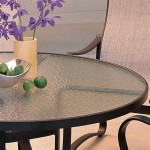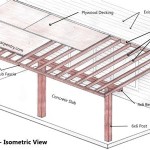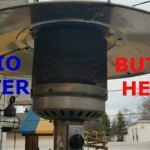Pagoda Umbrella Patio: A Comprehensive Guide
The pagoda umbrella patio, characterized by its distinctive tiered design resembling traditional Asian pagodas, offers a unique and aesthetically pleasing alternative to standard patio umbrellas. Beyond its visual appeal, the pagoda umbrella provides enhanced functionality and durability, making it a popular choice for both residential and commercial outdoor spaces. This article delves into the various aspects of the pagoda umbrella patio, including its design features, material considerations, benefits, maintenance, and factors influencing its selection and placement.
Design and Construction of Pagoda Umbrellas
The defining feature of a pagoda umbrella is its multi-tiered canopy. This stacked design differentiates it from conventional patio umbrellas, which typically have a single, continuous canopy. The tiers can vary in number and size, creating a layered effect that offers not only a unique aesthetic but also practical advantages in terms of sun and rain protection. The frame of a pagoda umbrella is usually constructed from durable materials such as aluminum, steel, or wood. Aluminum frames are lightweight and resistant to rust, making them suitable for coastal environments. Steel frames offer greater strength and stability, especially in windy conditions, but require protective coatings to prevent corrosion. Wooden frames, often made from hardwoods like teak or eucalyptus, provide a natural and elegant look but require regular maintenance to prevent weathering.
The canopy fabric is another critical element. High-quality pagoda umbrellas typically use solution-dyed acrylic fabrics like Sunbrella, which are known for their fade resistance, water repellency, and durability. These fabrics are treated to resist mold, mildew, and staining, ensuring a long lifespan even with frequent outdoor exposure. Less expensive options may use polyester fabrics, which are still water-resistant but may fade more quickly and offer less UV protection than acrylic fabrics. The canopy's construction involves meticulous stitching and reinforcement to ensure the tiers remain securely attached to the frame, even under stress from wind or rain. Some designs incorporate vents to allow air to circulate, reducing the risk of the umbrella being lifted or damaged by strong gusts.
The base of a pagoda umbrella is essential for stability. Options range from weighted bases made of concrete, granite, or cast iron to fillable bases that can be weighted with sand or water. The choice of base depends on the size and weight of the umbrella, as well as the expected wind conditions. Larger umbrellas require heavier bases to prevent tipping. Some pagoda umbrellas are designed for permanent installation, with the base bolted directly to a patio surface or deck. This provides maximum stability but limits the umbrella's portability. Others are designed with wheels or handles for easy movement and storage.
Advantages of Choosing a Pagoda Umbrella for Your Patio
Pagoda umbrellas offer several advantages over traditional patio umbrellas. The most obvious is their distinctive aesthetic appeal. The tiered canopy adds a touch of elegance and sophistication to any outdoor space, making it a focal point rather than just a functional accessory. This unique design can complement a variety of architectural styles and landscaping themes, from modern minimalist to classic traditional.
Beyond aesthetics, pagoda umbrellas provide superior sun and rain protection. The multi-tiered canopy creates a larger shaded area compared to single-canopy umbrellas of the same diameter. This larger coverage area is due to the overlapping tiers effectively broadening the shadow cast. This is particularly beneficial during peak sun hours, providing more complete UV protection for individuals relaxing underneath. The overlapping tiers also provide enhanced protection from rain, directing water away from the seating area and keeping it drier than a standard umbrella might.
Many high-quality pagoda umbrellas are constructed from durable, weather-resistant materials. As mentioned, frames are often made from aluminum, steel, or durable hardwoods, while canopies utilize solution-dyed acrylic fabrics. This combination of robust materials ensures the umbrella can withstand the rigors of outdoor use, including exposure to sun, rain, wind, and temperature fluctuations. The use of fade-resistant fabrics ensures the umbrella maintains its vibrant color and appearance over time, even with prolonged exposure to sunlight. Furthermore, the robust construction and reinforced stitching contribute to the umbrella's overall longevity, making it a worthwhile investment for homeowners and businesses alike.
The tiered design of pagoda umbrellas can also offer improved ventilation compared to some standard umbrella designs. The spaces between the tiers allow for greater airflow, which can help to keep the area underneath the umbrella cooler and more comfortable, particularly in hot and humid climates. This ventilation also reduces the risk of the umbrella becoming unstable in windy conditions, as the wind can pass through the tiers rather than creating lift.
Considerations for Selection and Maintenance
Selecting the right pagoda umbrella for a patio requires careful consideration of several factors. The size of the umbrella should be proportionate to the size of the patio and the seating area it is intended to cover. A too-small umbrella will not provide adequate shade, while a too-large umbrella may overwhelm the space. Consider the number of people who will typically be using the patio and choose an umbrella that provides sufficient coverage for everyone.
The material of the frame and canopy should be chosen based on the local climate and the desired aesthetic. Aluminum frames are a good choice for coastal areas due to their rust resistance, while steel frames are more suitable for windy areas due to their strength. Wooden frames add a touch of elegance but require more maintenance. Solution-dyed acrylic fabrics are the best option for areas with intense sun exposure, while polyester fabrics may be sufficient for areas with less sun. The color of the canopy should complement the existing patio furniture and décor. Lighter colors reflect more sunlight and can help to keep the area underneath the umbrella cooler, while darker colors provide more shade but may absorb more heat.
Regular maintenance is essential for extending the lifespan of a pagoda umbrella. The canopy should be cleaned regularly with mild soap and water to remove dirt, dust, and stains. Stubborn stains may require a specialized fabric cleaner. The frame should be inspected periodically for signs of rust or corrosion and treated with a protective coating as needed. Wooden frames should be oiled or sealed regularly to prevent weathering. The umbrella should be stored indoors during the off-season or when not in use for extended periods. This will protect it from the elements and prevent damage from wind, rain, and snow. When storing the umbrella, it should be thoroughly cleaned and dried to prevent mold and mildew growth.
The location of the pagoda umbrella should be carefully considered to maximize its benefits and minimize potential risks. Avoid placing the umbrella in areas that are exposed to excessively high winds, as this can damage the frame or canopy. Position the umbrella strategically to provide shade during the hottest parts of the day. Consider the movement of the sun throughout the day and adjust the umbrella's position accordingly. Make sure the umbrella does not obstruct walkways or other pathways. If the umbrella is placed near trees, be sure to trim any overhanging branches that could damage the canopy.
The type of base used for the pagoda umbrella is crucial for its stability and safety. A base that is too light will not provide adequate support, especially in windy conditions, and may cause the umbrella to tip over. A base that is too heavy may be difficult to move and store. Choose a base that is appropriately sized and weighted for the size and weight of the umbrella. Fillable bases are a good option for those who need to move the umbrella frequently, as they can be easily emptied and refilled. Permanent bases provide maximum stability but limit the umbrella's portability. Ensure the base is placed on a level surface to prevent the umbrella from leaning or tipping.

Pacific Pagoda 8 5 Ft Patio Umbrella With Trim

8 5 Moroccan Pagoda Style Patio Umbrella W Sunbrella Shade Canopy

Pacific Pagoda 8 5 Ft 2 Tone Patio Umbrella

Pacific Pagoda 8 5 Ft Patio Umbrella With Fringe

Umbrella 8 5 Ft White Aluminum Commercial Pagoda Market Patio With Fiberglass Ribs In Sunflower Yellow Sunbrella 194061509685 The Home Depot

Premium Pagoda Patio Umbrella Sage Strip 200cm Pg 03 Best Beach Fringe Retro Manufacturer

Umbrella 8 5 Ft White Aluminum Market Push Lift Pagoda Patio In Pacific Blue And Natural Pacifica Smpt852174pd 0401 Sa The Home Depot

Maypex 9 Ft Steel Crank Pagoda Market Patio Umbrella In Red 300005 R The Home Depot

Commercial Grade Pagoda Patio Umbrellas Pu 03

Collar Tilt Pagoda Umbrella Grandin Road








